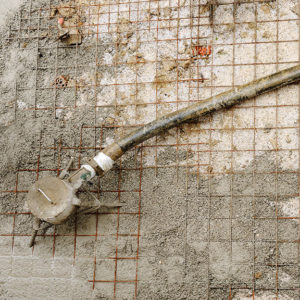By Jon Vacha
Vice President, Home Standards Inspection Services
Mold plays an important part in our ecosystem by breaking down and recycling material in nature. Unfortunately, mold can become troublesome when it is allowed to grow inside our homes. It is important to know where to look for mold so a problem can be identified – then, having the ability to clean up the mold and stop it from continuing to grow or return is crucial.
There are thousands of types of mold, but one of the most common we find during inspections is called Cladosporium. This black pepper-looking mold can cause severe reactions to those of us with allergies, asthma, or more sensitive immune systems.
 Mold needs moisture to grow. During home inspections mold is often found near leaky pipes or places where water from the exterior is allowed to penetrate the house. In attics with insufficient venting, high humidity can allow mold to grow on the underside of the sheathing of the roof. Although mold in this location shouldn’t pose a risk to our health, it can cause damage to the integrity of the roof if allowed to grow and decompose the sheathing.
Mold needs moisture to grow. During home inspections mold is often found near leaky pipes or places where water from the exterior is allowed to penetrate the house. In attics with insufficient venting, high humidity can allow mold to grow on the underside of the sheathing of the roof. Although mold in this location shouldn’t pose a risk to our health, it can cause damage to the integrity of the roof if allowed to grow and decompose the sheathing.
After mold is located and removed, the moisture that had allowed the mold to grow needs to be diverted. Ventilation can be improved in an attic. A leaking roof can be patched. A leaky pipe can be fixed. But, the most common problem we find is also the most simple to solve.
Improving the grade around the house ensures that water is draining away from the property instead of towards the foundation. If water is not against the foundation then it can’t find its way inside through basement walls. Also, make sure the gutters and extensions are installed and working properly.
If mold is not identified visually, it can often be suspected by its odor. A room or basement that gives off an “earthy” or “musty” smell can be an indicator that mold present.
If mold is identified or just suspected in a home, a mold test can be administered. This (interior home) test samples the air near the area of suspected mold and then a control sample is taken outdoors. Both samples are mailed to a lab for analysis. The results provide the clarity of knowing what type of mold is present (if any) and can give direction on how to move forward.
Cleanup that Mold
The Environmental Protection Agency (EPA) suggests hiring a professional to clean mold if it covers more than 10 square feet (less than roughly a 3 ft. by 3 ft. patch). Here are some are some tips they provide for cleaning mold yourself.
- Scrub mold off hard surfaces with detergent and water, and dry completely.
- Absorbent or porous materials, such as ceiling tiles and carpet, may have to be thrown away if they become moldy.
- Do not paint or caulk moldy surfaces. Clean up the mold and dry the surfaces before painting. Paint applied over moldy surfaces is likely to peel.
- Wear a facemask, gloves, and goggles.
Written by Jon Vacha, Vice President
© Copyright 2017 – Home Standards Inspection Services – All Rights Reserved



